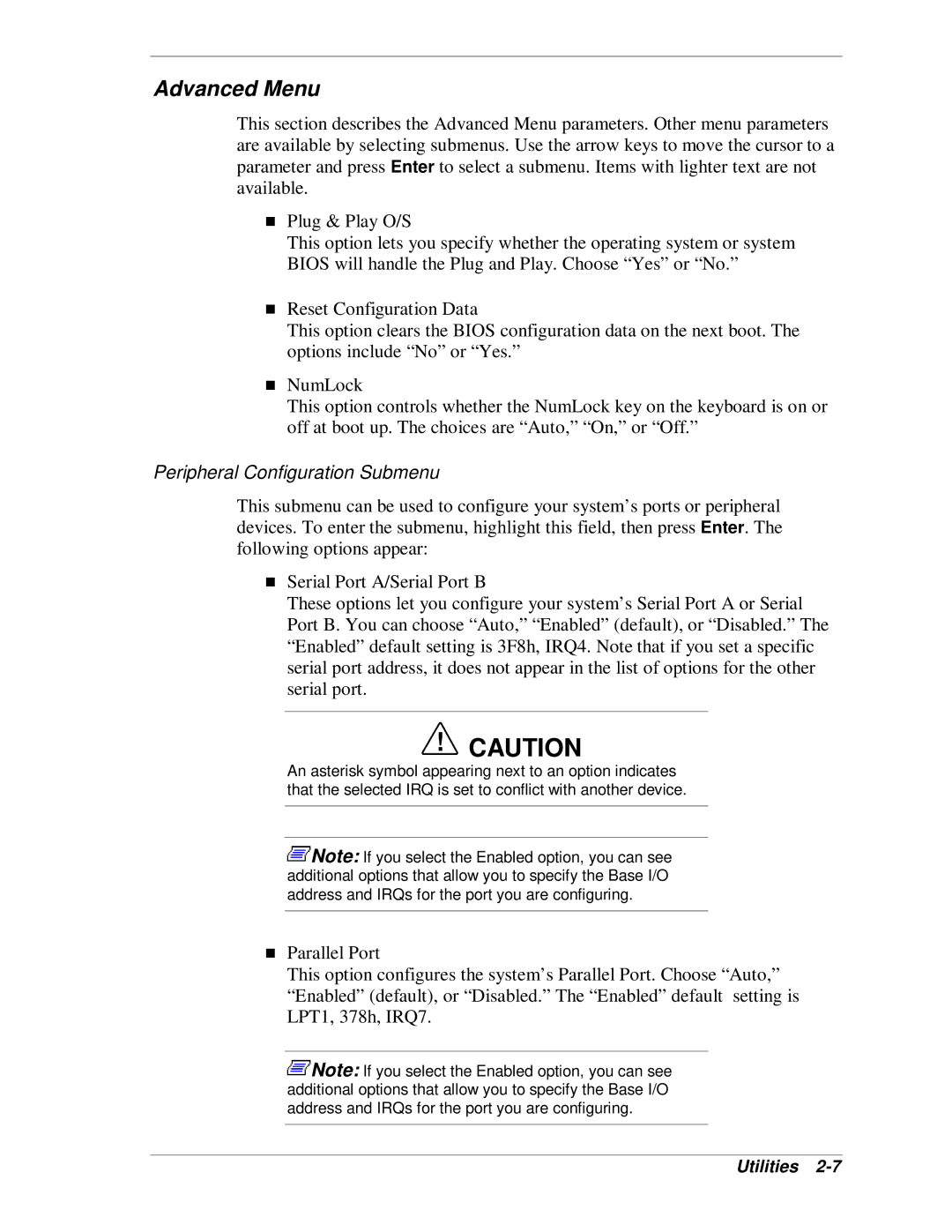
Advanced Menu
This section describes the Advanced Menu parameters. Other menu parameters are available by selecting submenus. Use the arrow keys to move the cursor to a parameter and press Enter to select a submenu. Items with lighter text are not available.
Plug & Play O/S
This option lets you specify whether the operating system or system
BIOS will handle the Plug and Play. Choose “Yes” or “No.”
Reset Configuration Data
This option clears the BIOS configuration data on the next boot. The
Toptions include “No” or “Yes.”
NumLock
This option controls whether the NumLock key on the keyboard is on or off at boot up. The choices are “Auto,” “On,” or “Off.”
Peripheral Configuration Submenu
This submenu can be used to configure your system’s ports or peripheral devices. To enter the submenu, highlight this field, then press Enter. The followingToptions appear:
Serial Port A/Serial Port B
These options let you configure your system’s Serial Port A or Serial Port B. You can choose “Auto,” “Enabled” (default), or “Disabled.” The “Enabled” default setting is 3F8h, IRQ4. Note that if you set a specific serial port address, it does not appear in the list of options for the other serial port.
!CAUTION
An asterisk symbol appearing next to an option indicates that the selected IRQ is set to conflict with another device.
![]() Note: If you select the Enabled option, you can see additional options that allow you to specify the Base I/O
Note: If you select the Enabled option, you can see additional options that allow you to specify the Base I/O
Taddress and IRQs for the port you are configuring.
Parallel Port
This option configures the system’s Parallel Port. Choose “Auto,” “Enabled” (default), or “Disabled.” The “Enabled” default setting is LPT1, 378h, IRQ7.
![]() Note: If you select the Enabled option, you can see additional options that allow you to specify the Base I/O address and IRQs for the port you are configuring.
Note: If you select the Enabled option, you can see additional options that allow you to specify the Base I/O address and IRQs for the port you are configuring.
